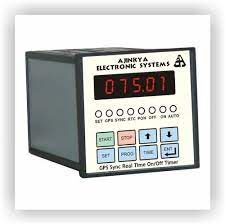In our modern world, where time is a precious commodity, the role of technology in managing and optimizing our time has become increasingly significant. From automated home systems to industrial processes, time switch technologies play a crucial role in orchestrating tasks and activities, bringing efficiency and convenience to our daily lives. In this article, we will delve into the versatility of time switch technologies, exploring their applications across various domains and highlighting their impact on time-driven living.
- Home Automation:
Time switch technologies form the backbone of home automation systems, enabling users to schedule and control various devices and appliances based on predefined time intervals. This functionality allows homeowners to optimize energy usage, enhance security, and streamline daily routines. For example, lights can be programmed to turn on and off at specific times, creating the illusion of occupancy to deter potential intruders. Similarly, thermostats can adjust temperature settings according to preset schedules, ensuring comfort while minimizing energy wastage.
- Industrial Automation:
In industrial settings, time switch technologies play a critical role in automating processes and equipment. They are used to synchronize operations, control machinery, and manage production schedules. For instance, in manufacturing facilities, time switches are employed to regulate the operation of equipment such as pumps, motors, and conveyor systems based on production requirements. By automating these processes, businesses can improve efficiency, reduce downtime, and enhance overall productivity.
- Lighting Control:
Time switch technologies are widely utilized in lighting control systems, offering precise scheduling and management of illumination. In commercial buildings, these systems are employed to adjust lighting levels according to occupancy patterns, daylight availability, and time of day. This not only optimizes energy usage but also creates a more comfortable and productive environment for occupants. In outdoor lighting applications, such as street lighting, time switches are used to activate and deactivate lights based on predefined schedules, enhancing safety and energy efficiency.
- Energy Management:
The integration of time switch technologies into energy management systems allows for the optimization of energy consumption in both residential and commercial settings. By scheduling the operation of heating, ventilation, and air conditioning (HVAC) systems, as well as other energy-intensive devices, energy managers can reduce peak demand and take advantage of off-peak rates, resulting in significant cost savings. Moreover, the ability to monitor and analyze energy usage patterns enables informed decision-making and continuous improvement in energy efficiency.
- Irrigation Systems:
In agriculture and landscaping, time switch technologies are used to control irrigation systems, ensuring optimal watering schedules for plants and crops. By programming the irrigation cycles based on factors such as soil moisture levels and time of day, farmers and gardeners can conserve water while promoting healthy growth. Additionally, the automation of irrigation processes reduces manual labor and allows for precise management of water resources, contributing to sustainable and efficient practices.
- Security Systems:
Time switch technologies play a vital role in security systems, where they are employed to schedule the activation of alarms, surveillance cameras, and access control systems. By programming these devices to operate at specific times or in response to predefined events, security professionals can enhance the protection of assets and premises. This proactive approach to security management not only mitigates risks but also provides peace of mind to users, knowing that their properties are being monitored and safeguarded effectively.
- Traffic Control:
In transportation and urban planning, time switch technologies are utilized in traffic control systems to regulate the flow of vehicles and pedestrians. Traffic signals, pedestrian crossings, and road signs are equipped with time switches to synchronize their operation, optimize traffic flow, and improve safety. By dynamically adjusting signal timings based on traffic patterns and time of day, these systems help alleviate congestion, reduce travel times, and enhance overall mobility in urban environments.
In conclusion, time switch technologies have revolutionized the way we manage time across various domains, from homes and businesses to public infrastructure. By harnessing the power of automation and precise scheduling, these technologies enable us to optimize resources, improve efficiency, and enhance the quality of our lives. As we continue to embrace time-driven living, the role of time switch technologies will only become more prominent, shaping the future of how we interact with time in our daily lives.
For Schneider products in Vadodara, connect with a trusted Schneider dealer. These authorized dealers offer a diverse range of Schneider electric solutions, ensuring quality and expertise for your electrical requirements in Vadodara.


No comments yet